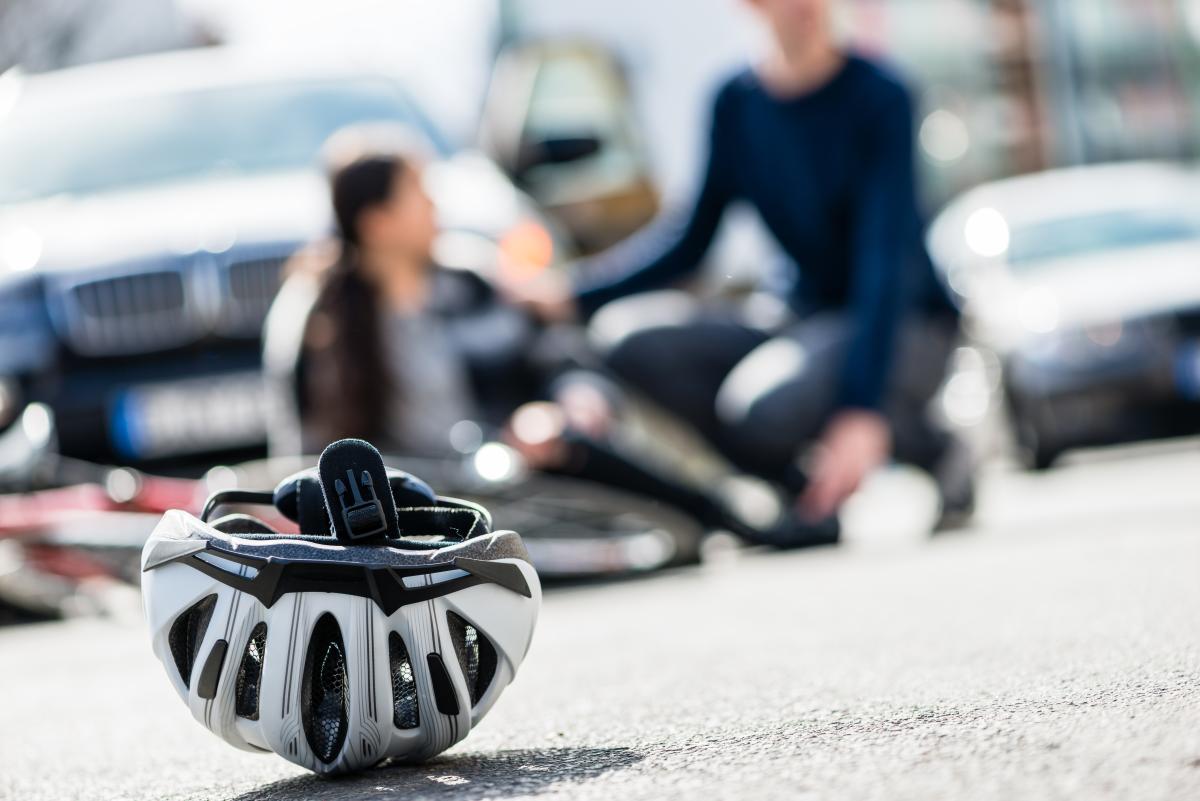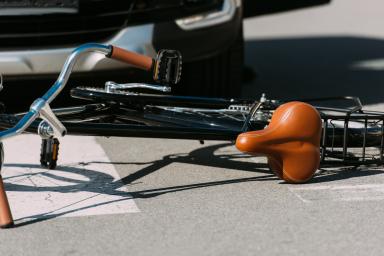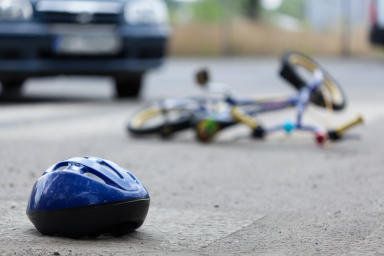Determining and Proving Liability in Bicycle Accident Lawsuits

Many people enjoy riding bicycles for both transportation and recreation. While riding a bike is generally safe, it is important to exercise caution, as bicycle accidents can result in severe injuries and even death.
According to the Centers for Disease Control and Prevention (CDC), about 1,000 bicyclists die in an accident, and over 130,000 are injured in collisions every year in the United States. While only 1% of all trips in the country involve bicycles, bicyclists account for more than 2% of people who die in accidents involving motor vehicles.
If you’ve been involved in a bike accident and sustained injuries due to someone else’s negligence, you may be entitled to compensation for your damages. Pursuing legal action can help you recover damages to pay for medical bills, lost wages, and other expenses you incur during your recovery.
But to get the compensation you deserve, you and your attorney will need to prove that the other party was at fault for the accident.
To help you prepare for this possibility, here’s a close look at how your bicycle accident attorney can prove liability in a lawsuit.
How Your Bicycle Accident Attorney Proves Liability
In most cases, your attorney will attempt to prove liability by demonstrating that the person who hit you was acting negligently, meaning the driver wasn’t exercising caution while driving or following road rules.
However, this isn’t the only possible way to prove liability after a bike accident. To help you better understand what to expect, here are the most common ways your bicycle accident attorney will likely attempt to prove liability.
Use Negligence to Prove Fault
The most common way attorneys prove liability in bicycle accident cases is by using negligence. Negligence is a legal term that refers to a failure to exercise the degree of care a reasonable person would have exercised in the same circumstances. To prove negligence in a bicycle accident case, your attorney will need to show that:
The defendant owed a duty of care to you as a bicyclist.
The defendant breached that duty of care by doing something that a reasonable person would not have done, or by failing to do something that a reasonable person would have done.
The defendant's breach of duty was the proximate cause of your injuries.
You suffered damages as a result of the defendant's breach of duty.
For example, if a driver hits you while texting and driving, that would be considered negligence, and the driver would likely be held liable for the accident.
Similarly, if a driver runs a red light and hits you while you’re riding through an intersection, the driver would be held liable for the accident. To prove this, your attorney may use camera footage, witness statements, or any other evidence that shows the driver failed to exercise care by stopping at the red light.
Other Ways to Prove Fault and Liability in Court
Demonstrating negligence is the most common way to prove liability in a personal injury lawsuit, but depending on the circumstances, there are a few other ways to accomplish this.
Some other ways to prove fault and liability in a bicycle accident case include:
Strict liability: In some cases, the defendant may be held strictly liable for the accident. This is often the case in product liability cases where a defective product causes an accident (e.g., you buy a new bike and get into an accident due to faulty brakes).
Respondeat superior: This legal doctrine holds an employer responsible for its employee's actions if the employee acted within the scope of their employment at the time of the accident.
Vicarious liability: This refers to holding a person responsible for the actions of another person, even if they were not directly involved in the accident (e.g. a parent letting their underage child drive a vehicle, leading to an accident).
Defendants in a Bicycle Accident Lawsuit
When defending against a bicycle accident lawsuit, the defendant must show that they were not entirely at fault for the accident. Defendants and their attorneys can use several defenses to challenge the plaintiff's claims of negligence, including comparative negligence, assumption of risk, and contributory negligence.
Comparative Negligence
Comparative negligence is a defense that argues that the plaintiff's own negligence at least partially contributed to the accident. This defense is based on the idea that both the plaintiff and the defendant share some responsibility for the accident. To use this defense, the defendant must show that the plaintiff was also negligent and that their negligence contributed to the accident.
For example, if the plaintiff was riding their bicycle at night without a headlight, and the defendant did not see them and hit them with their car, the defendant may argue that the plaintiff's failure to use a headlight contributed to the accident.
When comparative negligence applies, the defendant may be able to significantly reduce the percentage of the damages they are responsible for.
With pure comparative negligence, the plaintiff is still eligible to receive damages if they are found to be more than 50% at fault for the accident. For example, if the bicyclist is found to be 60% responsible, they can still receive compensation for 40% of their damages.
In states that use modified comparative negligence, the plaintiff can only receive damages if they are less than 50% responsible for the accident. This means that the defendant may not have to pay any damages if they can prove the bicyclist shares the majority of the blame for the accident.
Assumption of Risk
Assumption of risk is a defense that argues that the plaintiff knew of the risks involved in cycling and voluntarily assumed those risks. This defense is based on the idea that the cyclist knowingly engaged in an activity that could result in injury or harm and that they cannot hold the defendant responsible for those risks. To use this defense, the defendant must show that the plaintiff was aware of the risks and voluntarily assumed them.
For example, suppose the plaintiff was racing in a bicycle competition and crashed during the race. In that case, the defendant may argue that the plaintiff assumed the risk of injury by participating in the race.
Contributory Negligence
With contributory negligence, the plaintiff is not able to recover any damages from the defendant if their negligence contributed to their injuries.
For example, if the plaintiff was riding their bicycle on the wrong side of the road and collided with the defendant's car, the defendant may argue that the plaintiff's negligence led to the accident. Under contributory negligence, the plaintiff could not receive any compensation.
Per Cornell Law School, the degree of the plaintiff’s negligence is irrelevant. If the plaintiff is at all responsible for the accident, they are not able to recover any damages from the defendant.
Most states have adopted comparative negligence over contributory negligence, as the latter often leads to inequitable outcomes. Alabama, Maryland, North Carolina, and Virginia are the only remaining states that use contributory negligence in personal injury cases.
Does my auto insurance cover collisions with cyclists?
In many cases, your auto insurance will cover collisions with cyclists. However, the coverage amount will depend on your policy's specifics. You should review your policy to determine what is covered and your limits.
Your auto liability coverage will cover the bicyclist’s property damage and medical expenses after an accident. If you are uninsured, the bicyclist is more likely to file a lawsuit to recover damages since they are unable to get compensation through your insurance.
Resources for Bicycle Accident Victims
If you have been involved in a bicycle accident, it’s important to take steps quickly to get the compensation you need to recover from your injuries without sacrificing your financial stability.
Below are some helpful resources for bicycle accident victims.
The National Highway Traffic Safety Administration
The National Highway Traffic Safety Administration provides information on bicycle safety and statistics on bicycle accidents.
Bicyclists can use this resource to learn more about how to avoid accidents, what rules they need to follow, and how to responsibly share the road with motor vehicles.
Visit: nhtsa.gov
The League of American Bicyclists
The League of American Bicyclists provides education and advocacy for bicyclists. Riders can learn about state-specific bike laws and what to do after a bike accident.
This can be helpful when determining fault or attempting to prove negligence after an accident.
Visit: bikeleague.org
American Bar Association
The American Bar Association (ABA) provides information regarding personal injury law, including personal injury claims and how to prove negligence.
Bike accident victims can also use the ABA website to search for lawyers by name to verify their credentials before hiring an attorney.
Visit: americanbar.org
Expertise.com StaffAuthor
Step into the world of Expertise.com, your go-to hub for credible insights. We don't take accuracy lightly around here. Our squad of expert reviewers, each a maestro in their field, has given the green light to every single article you'll find. From rigorous fact-checking to meticulous evaluations of service providers, we've got it all covered. So feel free to dive in and explore. The information you'll uncover has been stamped with the seal of approval by our top-notch experts.




